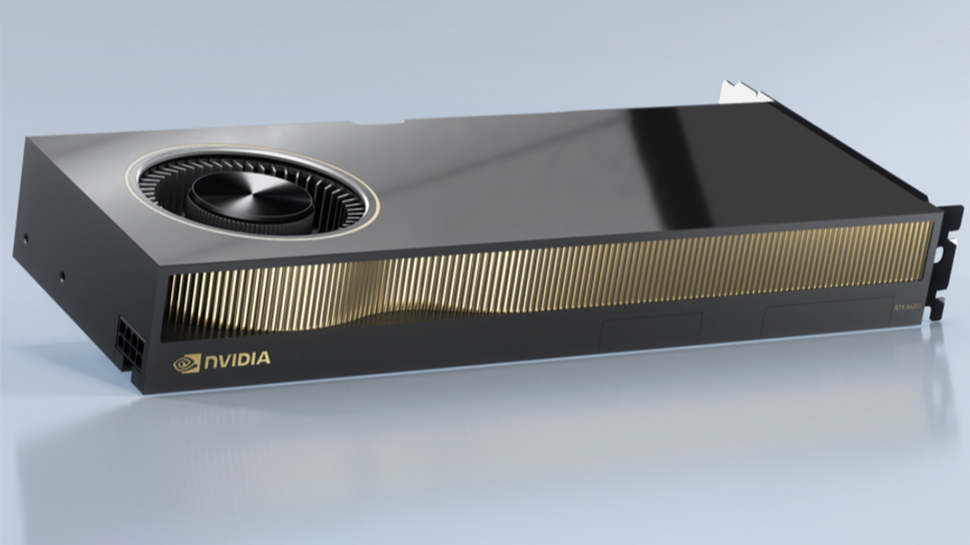Nvidia has killed two of its iconic brands - here's why
With Quadro and Tesla brands gone, Nvidia’s line-up has become a whole lot simpler

Nvidia opted not to use its Quadro and Tesla brands for its latest Ampere products, designed for professional graphics and compute applications.
Apparently, the company decided to retire both trademarks, since many cards were overlapping with each other, and dropping them is expected to simplify Nvidia’s product line-up significantly.
- We've built a list of the best mobile workstations out there
- Check out the best laptops for video editing
- Here are the best workstations you can buy
The two brands
Nvidia introduced its first Quadro card in early 2000 with the release of its NV10GL-based solution (GeForce 256, the Celsius architecture), aimed at CAD/CAM and digital content creation (DCC) professionals.
Because of Nvidia’s fine OpenGL drivers and superior hardware, Quadro graphics cards quickly became popular in the ProViz community and drove renowned providers of professional solutions - such as 3DLabs, Appian Graphics, and FireGL - out of business.
Eventually, Quadro became one of the most iconic brands in the graphics industry, which was then commanded by two players: Nvidia and ATI Technologies (acquired by AMD in 2006). Today, Nvidia’s Quadro commands the lion’s share of ProViz graphics cards market.
The first Tesla products emerged seven years after the first Quadro graphics cards. The series got its name after the name of the GPU architecture that powered the first Tesla boards.
Nvidia realized early enough that graphics processors could be used for general-purpose processing (GPGPU), but one of the main obstacles for popularization of GPGPU was the lack of a proper application programming interface (API).
Are you a pro? Subscribe to our newsletter
Sign up to the TechRadar Pro newsletter to get all the top news, opinion, features and guidance your business needs to succeed!
Along with its Tesla architecture introduced in late 2006, the company rolled out its proprietary CUDA API for GPGPU. CUDA rapidly gained recognition among GPGPU enthusiasts in mid-2000s and eventually Tesla became a workhorse for numerous Top 500 supercomputers.
Nvidia’s Tesla managed to outlive numerous brands that were aimed at the same GPGPU and HPC markets, including AMD’s FireStream and FirePro Server-series as well as Intel’s Xeon Phi accelerators.
Differentiation and confusion
In a bid to differentiate its Quadro and Tesla cards from consumer-oriented GeForce and Titan boards, Nvidia disabled certain graphics and compute functionality on the latter and supplied the former with drivers certified by ISVs of professional applications.
But on the hardware level both Quadro and Tesla were similar as they both used ‘full’ GPUs with all capabilities enabled. Therefore, it was rather confusing when Nvidia recommended engineers use Quadros for visualization and Teslas for simulation (something that happened back in the days).
At some point, Nvidia’s Quadro and Tesla boards started to overlap and caused even more confusion both externally and internally. Quadro cards are actively cooled and can be used in a desktop to run neural network prototyping even though they are positioned for CAD/CAM and DCC applications. Meanwhile, passively-cooled Tesla V100 can provide a virtual Quadro instance for VDI applications even though it is meant for computing.
In a bid to avoid confusion in the future, Nvidia plans to retire its Quadro and Tesla brands and cover both professional graphics and compute markets using just one brand, its own name. This underlines how flexible Nvidia’s solutions are potentially allows Nvidia to reduce the number of SKUs it has by eliminating overlapping products.
Simple enough?
Nvidia is striving to simplify its portfolio, but there's still plenty of room for confusion.
The company has the Nvidia A100 that is designed purely for computing, is based on the GA100 GPU and comes in mezzanine board and add-in-card form-factors.
It also has the Nvidia A40 product that is designed for virtual workstations as well as server-based compute workloads and carries the GA102 GPU. Finally, there is the Nvidia RTX A6000 , a workstation-grade card powered by the GA102.
At this point, RTX points to a client product, whereas the lack of any letters points to a datacenter product. Meanwhile, Nvidia also has DGX A100 and EGX A100 products that are designed for different applications, but which are still datacenter-grade devices.
But when it comes to consumer-grade client PCs, many people and even stores omit the word GeForce when they talk about Nvidia’s gaming cards. Therefore, they call the latest boards as ‘Nvidia RTX 3090’, ‘Nvidia RTX 3080’ as well as ‘Nvidia RTX 3070’ and these products can eventually be confused with lower-end professional ‘Nvidia RTX A-series’ cards (think Nvidia RTX A4000).
Of course, only time will tell whether many people will be confused with the Nvidia’s new naming scheme that omits Quadro and Tesla, yet keeps GeForce, RTX, DGX, and introduces EGX. The company believes it has made life easier for its datacenter and workstation customers, while remaining consistent for gamers with client PCs.
Source: AnandTech
Anton Shilov is the News Editor at AnandTech, Inc. For more than four years, he has been writing for magazines and websites such as AnandTech, TechRadar, Tom's Guide, Kit Guru, EE Times, Tech & Learning, EE Times Asia, Design & Reuse.